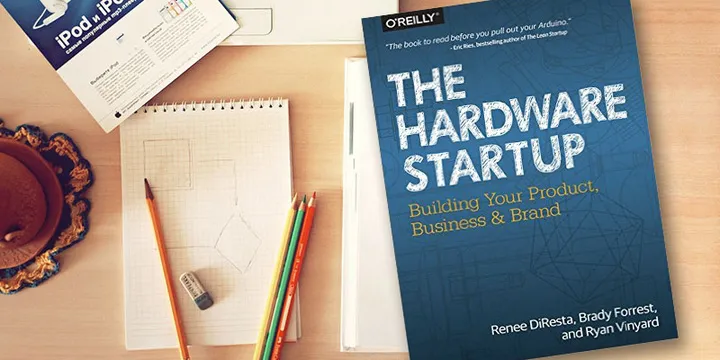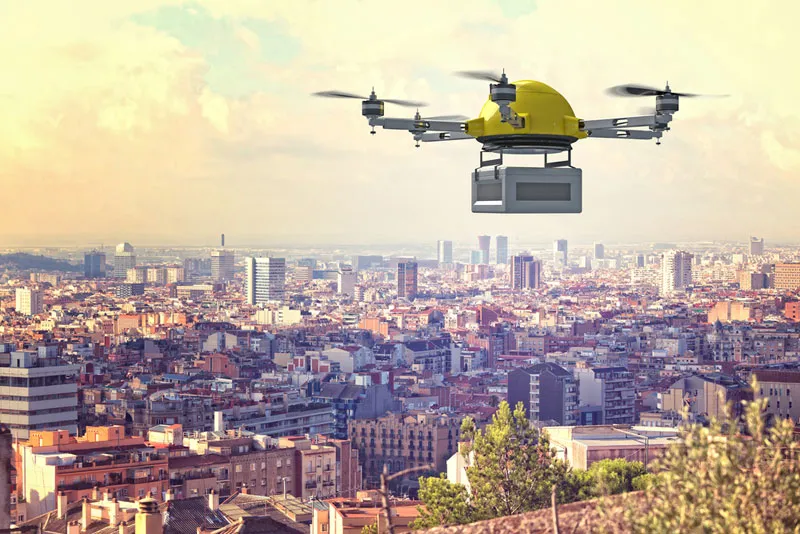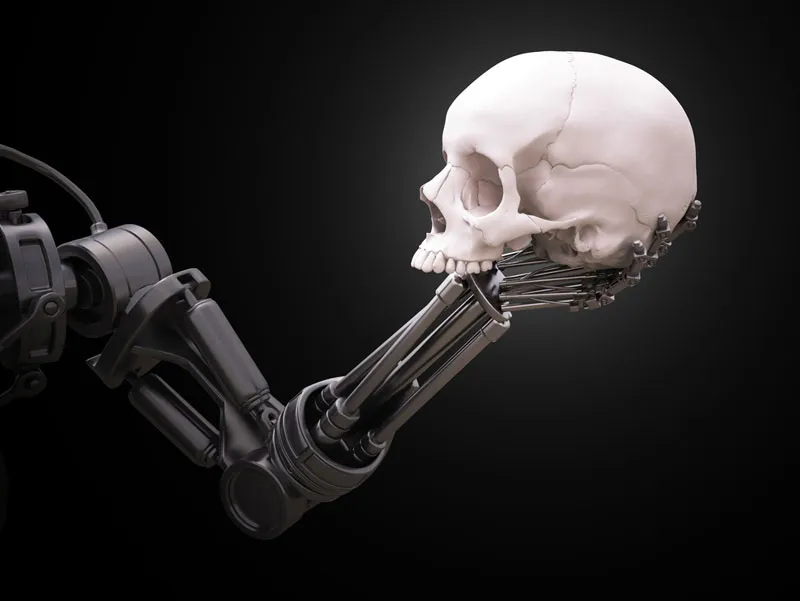Hardware startups and products: founder tips for making hardware less hard
Hardware startups are now beginning to enjoy the type of attention that their software counterparts have enjoyed. “The decreasing cost of prototyping is lowering the barriers to entry and making it more feasible to develop a physical product within economic constraints,” begin Renee DiResta, Brady Forrest and Ryan Vinyard in their new book The Hardware Startup: Building Your Product, Business, and Brand.

“Technological advances, economic experiments, and societal connections have facilitated the growth of an ecosystem that enables founders to launch hardware companies with fewer obstacles than ever before,” the authors explain, citing the rise of VCs in this space as well as crowdfunding campaigns on sites such as KickStarter and Indiegogo.
Here are my key takeaways from the 11 chapters in the book. The 307 pages are packed with case studies, tips and terminology, and make for a compelling read for aspiring hardware entrepreneurs.
The hardware wave
The authors begin with a wide overview of the rise of the modern hardware startup movement, which can be traced back to the do-it-yourself (DIY) culture of the 1960s. This was best exemplified by Stewart Brand’s Whole Earth Catalog, and the spread of community networks and meetups such as the Homebrew Computer Club in Silicon Valley (whose members included Steve Wozniak and Steve Jobs).
Neil Gershenfeld, founder of the MIT Center for Bits and Atoms (CBA) in 2001, promoted the cross-disciplinary fabrication facility movement (fab labs). Dale Dougherty, cofounder of O’Reilly Media, created Make magazine in 2005; the first Maker Faire was launched in 2006, and there are now many such community events held around the world (eg. see my photo essay on the Bangalore Mini-Maker Faire).
These events have a mix of hobbyists and product professionals. “The difference between a project and a product is the difference between making one and making many. To turn a project into a company, the product has to be scalable,” the authors explain.
3D printers, computer numerical control (CNC) routers, laser cutters and CAD software have altered the landscape of personal fabrication, enabling quick and affordable iteration. “Inexpensive boards (such as Arduino, Raspberry Pi, and BeagleBone) make electronics prototyping accessible to everyone,” the authors say. A number of enabling startups (eg. MakerBot, Adafruit, SparkFun) have also sprung into the game to help other founders develop products.
Component prices for sensors, batteries, and LEDs are dropping, spurred by the smartphone wave; the smartphone is itself becoming a controller or hub for other hardware products. On a global scale, there is increasing awareness of the manufacturing ecosystem in Shenzhen, China, spurred by sites such as Alibaba and Taobao which connect startups with factories.
Another trend to watch is the rise of open source hardware (eg. via the Open Source Hardware Association OSHWA), and the spread of makerspaces and hackerspaces (see the Hackerspace wiki). Accelerators and incubators focused on hardware are spreading across the world as well, eg. see my writeup on the IKP-EDEN incubator and makerspace in Bangalore.
The authors divide hardware products into four categories: connected devices (eg. Nest, SmartThings, Belkin’s WeMo, Lowe’s Iris Smart Home Management System); wearables (Quantified Self: eg. Nike+ and Fuelband, UnderArmour’s Armour39), robots (eg. Fetch Robotics, Rethink Robotics, Agrobot, UAV or unmanned aerial vehicles such as DroneDeploy, and ROV or remotely operated vehicles); and designed products (eg. Quirky).
Idea validation and community engagement
Social media, community networks and meetups are great places for ‘a maker, a hacker, and a hustler’ to connect, the authors explain. These online and offline activities help find co-founders and mentors. Interest can be sensed via actual prototyping, trendspotting and storytelling.
For example, David Lang, TED Fellow and author of Zero to Maker, co-founded OpenROV, a Bay Area startup building robots for underwater exploration. They spread their message through compelling stories and blogposts, and also organised a community trip down the California coast. Chris Anderson, founder of drone startup 3D Robotics, set up the initial DIY Drones community on Ning.

“It’s worth a founder’s time to pay attention to why the community is interested in the product, and to proactively foster engagement,” the authors advise.
Know your market
Founders should also develop a deep understanding of the market size and trends, and be able to describe it in terms of key ratios such as the total addressable market (TAM), serviceable available market (SAM), serviceable obtainable market (SOM), customer acquisition cost (CAC) and lifetime value (LTV). Founders should be able to segment the market in terms of needs and behaviours, and differentiate their proposed offerings.
For example, Jawbone began with noise-canceling headsets for soldiers, and then diversified into other kinds of wearables. Lumo Body-Tech, co-founded by Monisha Perkash, conducted extensive customer research with 30 different iterations for its body posture sensors; it finally arrived at the monitor band design instead of adhesives or garment tack-ons.
Branding
Many hardware products will end up on digital or physical store shelves. “Your package messaging must be appealing enough to convince a busy shopper to put your widget into her cart,” the authors explain. A number of design consultancies can be roped in here.
Founders should be clear on how their products evoke different kinds of emotions, connections, explorations, and impacts among target users. “Your ultimate goal is to sell your brand - the values, vision and emotional connection - not your product,” advises Jinal Shah, Global Digital Strategy Director, J. Walter Thompson.
The brand name should pass the ‘SMILE test’ (suggestive, meaningful, imagery, legs, emotion) and ‘SCRATCH test’ (spelling-challenged, copycat, restrictive, annoying, tame, curse of insider knowledge, hard-to-pronounce) – and even the ‘bar test’ (be understood in a loud bar)! A useful chart cited by the authors in this regard is the ‘brand touchpoint matrix.’
For example, GoPro made cameras built on emotional connections with customers and created compelling videos; its competitor Contour cameras had to shut down but its founder Marc Barros re-launched it as a new company called Moment, via a Kickstarter raise. Matt Rogers, cofounder of Nest, says its brand mission is to ‘rethink unloved devices.’
Prototyping
“In addition to learning, prototyping is also fundamentally a communication tool,” the authors explain; it helps pitch to a range of stakeholders including customers and investors.
Founders should develop works-like (WL) and looks-like (LL) prototypes across iterative cycles, according to Dave Lyons, formerly at Tesla and IDEO. Founders can also learn by taking apart competitors’ products (referred to as ‘teardowns’).
The founding team should have a mix of skills and experience in industrial design, UX, UI, mechanical engineering, electrical engineering and software development. The authors cover a wide range of tools that founders will need, eg. a real-time operating system (RTOS: Nucleus, Integrity, FreeRTOS). Platform companies like Spark offer development kits and cloud services as well.

Connected devices can leverage many wireless options, eg. WiFi, cellular, Bluetooth, Zigbee. Range, power consumption and peak data rates will need to be factored in. Prototyping will be needed for future product versions as well, eg. over-the-air firmware updates for Ringly, which provides status notification alerts for smartphone users.
Manufacturing
“Prototyping is making one of something; manufacturing is making something that can be made over and over again by people you don’t know,” the authors explain. Many hardware product founders may be great in design – but mass manufacturing is another game.
Founders will need to master terms such as design for manufacture (DFM), design for assembly (DFA), design for test (DFT), design for cost (DFC), engineering verification test (EVT) and engineering change order (ECO). This may include engaging manufacturers overseas, sometimes via an accelerator – which in turn calls for understanding freight, customs, quality assurance, certification and packaging.
For example, Onyx, a wearable group communication platform, engaged PCH Access to help with its first production run in China (Mexico and China are alternatives to domestic manufacture for US startups). MonkeyLectric produces a bike light system that makes riders safer during nighttime rides, while simultaneously turning their wheels into digital art; its first batch was manufactured in Mexico before shifting to China.
“China’s open framework is able to produce phones cheaper, faster, and with more variety than seen in Western markets,” observes hardware consultant Andrew Huang, whose projects include the Novena laptop and Chibitronics circuit stickers. A ‘permissive’ IP environment can spur more innovation, especially at a grass-roots level.
“While overseas manufacturing can reduce labor costs, it’s important for hardware entrepreneurs to consider all aspects of production - feasibility, ease of iteration, quality - when choosing the best location for their startup to set up shop,” the authors caution.
Accelerators
A number of hardware accelerators offer formal design reviews and mentorship in design, manufacturing, logistics, reliability, standards, and testing. Prominent players in this space include Lemnos, Y Combinator, 500 Startups, TechStars, PCH, AlphaLab Gear, Flextronics Lab IX, Logistica Asia, HaxAsia and HAXLR8R (‘hack-celerator’ programme in China).
For example, Ayah Bdeir, founder of LittleBits connected circuit components, tapped PCH to link up with manufacturers in China. Chris Bruce, founder of infant health indicator wearable Sproutling, tied up with Lemnos Labs for his startup.
Funding
Founders can tap crowdfunding sites to develop products, and investor funds to grow their companies. Lowe’s invests in connected-home startups as a strategic investor. Fundraising platforms such as Kickstarter and Indiegogo can help entrepreneurs validate markets, raise money, and grow engaged communities, according to the authors. Funders should have a solid understanding of how these sites work (eg. the ‘perks’ feature and commissions charged), and how to run campaigns, engage PR firms (eg. Wareness), monitor analytics and report to their communities.
Kickstarter, launched in 2009, has featured over 225,000 projects, with $1.67 billion raised on the 83,243 successfully funded projects. Indiegogo offers fixed and flexible fundraising campaign structures. Misfit Wearables raised donations on Indigegogo, while Otherfab and Pebble ran Kickstarter campaigns.
Startups such as Lockitron and Scout Alarm have also launched crowdfunding on their own sites. Open source solutions such as Crowdhoster (a ‘WordPress for crowdfunding’) are available in this regard.
Going to market
The final step in the first product cycle is go to market: developing the right business model, which includes pricing, marketing, channels, distribution and logistics. A range of revenue options are available for founders: product as platform, revenue through subscription, and revenues through other avenues such as content and analytics.

For example, Lumo BodyTech offers designer clips; Misfit Wearables sells a variety of necklace holsters and leather bands for the Shine fitness tracker, and has also partnered with Swarovski.
“Connected devices offer many new opportunities for content plays. Digital content can take the form of recipes for a connected kitchen device, or workouts created by a celebrity trainer for a fitness wearable,” the authors explain.
Pricing should balance issues of cost, market benchmarks, competitive offerings, and customer segmentation, as shown by the example of Tile, a device that helps track lost objects. Nest communicates regularly with retailers about placement, promotions and store performance.
Legal
There are six areas of legal complexity that hardware companies will encounter, according to the authors. These include company formation, IP protection, contracts, liabilities, regulation and certification.
A number of startups have also emerged in this services space, eg. LegalZoom, Docracy, and Clerky, as well as advisor firms like Schox Patent Group. Patenting can improve valuation prospects and deter competitors.
“The Third Industrial Revolution is about the power of the Web intersecting with modern manufacturing technologies,” the authors conclude. “Workers who operate the factories of the future will require a different kind of technical skill,” they sum up.
About the authors:
Renee DiResta is Vice President of Business Development at Haven, a marketplace for ocean freight shipping, and a co-founder of the IoT Syndicate on AngelList. She was previously at O’Reilly AlphaTech Ventures and Jane Street Capital.
Brady Forrest runs Highway1, PCH’s accelerator. He co-founded Ignite, a global talk series, and is a venture advisor to 500 Startups.
Ryan Vinyard is the engineering lead at hardware accelerator Highway1 in San Francisco, and has a degree in product design from Stanford University.
Image credit "ShutterStock"







